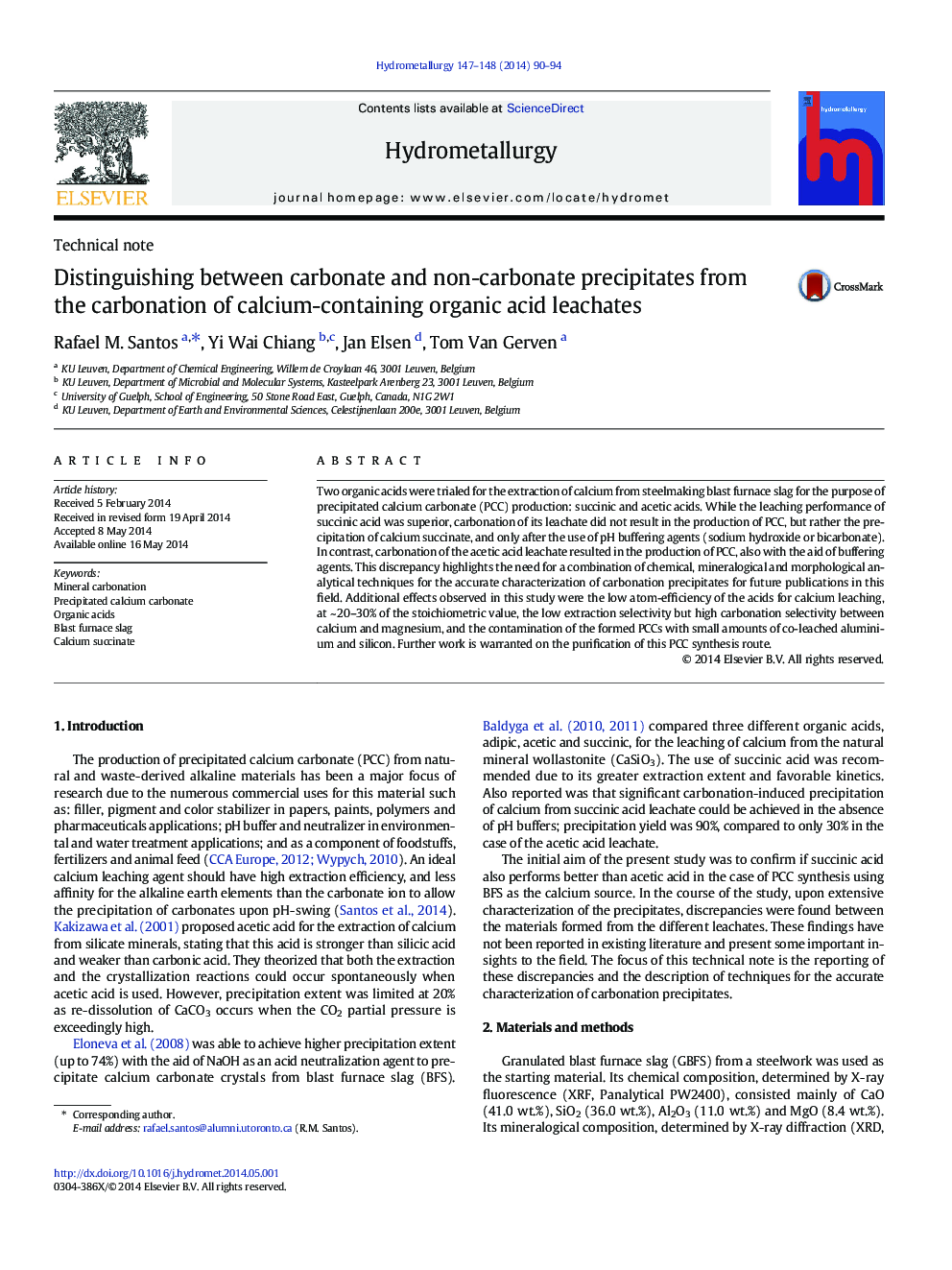| کد مقاله | کد نشریه | سال انتشار | مقاله انگلیسی | نسخه تمام متن |
|---|---|---|---|---|
| 212096 | 462033 | 2014 | 5 صفحه PDF | دانلود رایگان |
• Blast furnace slag was leached with succinic and acetic acids to extract calcium.
• The addition of pH buffers was required to induce precipitation upon carbonation.
• Carbonation of succinic acid leachate resulted in undesirable calcium succinate.
• Carbonation of acetic acid leachate resulted in desirable calcium carbonate.
• Determination of precipitate properties requires accurate characterization.
Two organic acids were trialed for the extraction of calcium from steelmaking blast furnace slag for the purpose of precipitated calcium carbonate (PCC) production: succinic and acetic acids. While the leaching performance of succinic acid was superior, carbonation of its leachate did not result in the production of PCC, but rather the precipitation of calcium succinate, and only after the use of pH buffering agents (sodium hydroxide or bicarbonate). In contrast, carbonation of the acetic acid leachate resulted in the production of PCC, also with the aid of buffering agents. This discrepancy highlights the need for a combination of chemical, mineralogical and morphological analytical techniques for the accurate characterization of carbonation precipitates for future publications in this field. Additional effects observed in this study were the low atom-efficiency of the acids for calcium leaching, at ~ 20–30% of the stoichiometric value, the low extraction selectivity but high carbonation selectivity between calcium and magnesium, and the contamination of the formed PCCs with small amounts of co-leached aluminium and silicon. Further work is warranted on the purification of this PCC synthesis route.
Figure optionsDownload as PowerPoint slide
Journal: Hydrometallurgy - Volumes 147–148, August 2014, Pages 90–94
